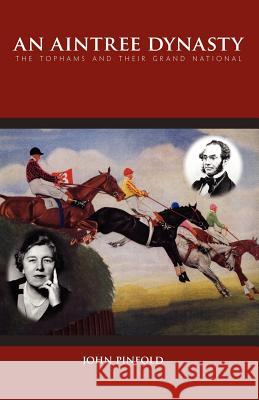An Aintree Dynasty: The Tophams and Their Grand National » książka
An Aintree Dynasty: The Tophams and Their Grand National
ISBN-13: 9781412090896 / Angielski / Miękka / 2006 / 328 str.
An Aintree Dynasty: The Tophams and Their Grand National
ISBN-13: 9781412090896 / Angielski / Miękka / 2006 / 328 str.
(netto: 112,43 VAT: 5%)
Najniższa cena z 30 dni: 113,67 zł
ok. 13-18 dni roboczych.
Darmowa dostawa!
For over one hundred years the name Topham was inextricably linked to the Grand National, even though not a single runner in it ever carried their colours, and no member of the family ever rode over Aintree's famous fences. Yet their contribution to Grand National history was equally as important as all the heroes and heroines, both human and equine, who have thrilled successive generations of racegoers as they have done battle each spring to win the world's greatest steeplechase. For the Tophams were the promoters of the race, responsible for drawing up the race conditions, developing and maintaining the course itself, and, for much of the period, compiling the handicap as well. Without them, there simply would have been no Grand National.
Edward William Topham, known as 'The Wizard' was the founder of the dynasty. He was the first handicapper of the Grand National, and in 1848 he took over the management of Aintree racecourse and became the sole promoter of the Grand National. So successful was he that the family dynasty he established remained in control of Aintree through three generations for one hundred and twenty-five years until his grand-daughter-in-law, Mrs. Mirabel Topham, sold the course in 1973. So long an association of one family with a premier sporting event is unusual if not quite unparalleled. Yet although many books have been written about the Grand National, few of them have made more than a cursory reference to the family who promoted and maintained it - at least until Mirabel Topham began to hit the headlines in the 1950s and '60s. This neglect is undeserved, for the story of the Tophams is as colourful as any of the horses or jockeys who have taken part in therace they were responsible for staging.
Each generation of Tophams who ran Aintree faced major challenges, including sustained criticisms of the course and the race conditions. How they faced up to these challenges and fought to maintain the prestige and the appeal of the National is a major theme of this book. In some respects the story of Tophams follows that of many family firms, being created by the first generation, consolidated by the second, and dissipated by the third. Yet in other respects it does not conform to this pattern, and had the fierce boardroom battle that broke out in the 1930s gone the other way, then the outcome could have been very different. For the last forty years of Tophams' control of Aintree the larger than life character of Mirabel Topham played a crucial role in determining the destiny of the course and its most famous race. This book attempts to strike a balance between those who have sought to blame all Aintree's problems on her dictatorial and confrontational style, and those who will not hear a word said against her.
This is the first book to offer a full account of the Topham family's long association with Aintree. Written largely from contemporary sources it provides much new information on Aintree's colourful and often controversial past, as seen through the eyes of those who were responsible for staging the world's most famous steeplechase.











